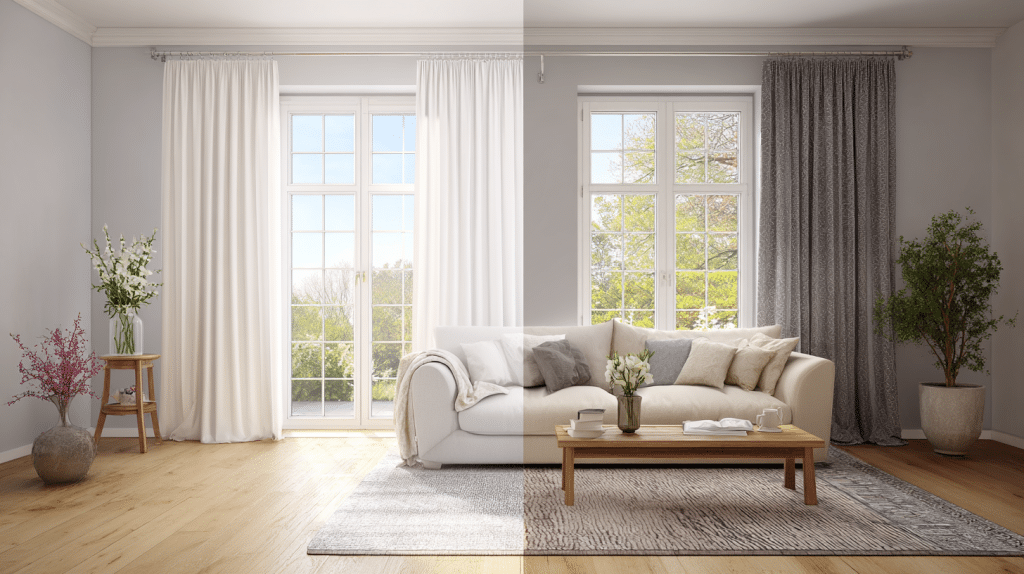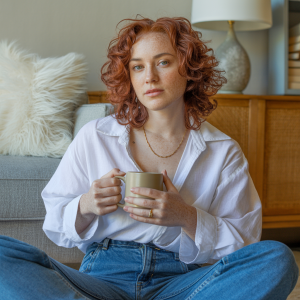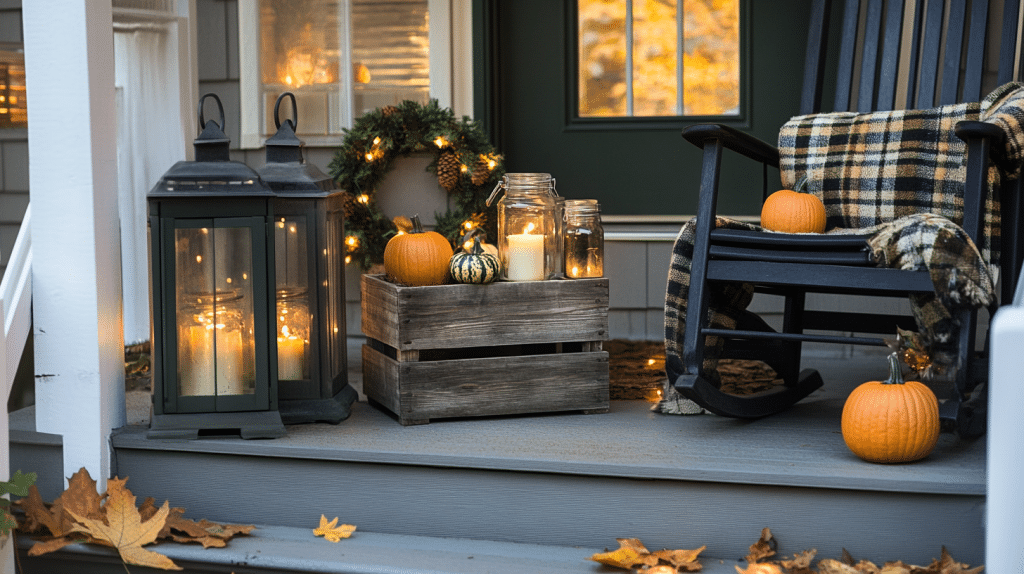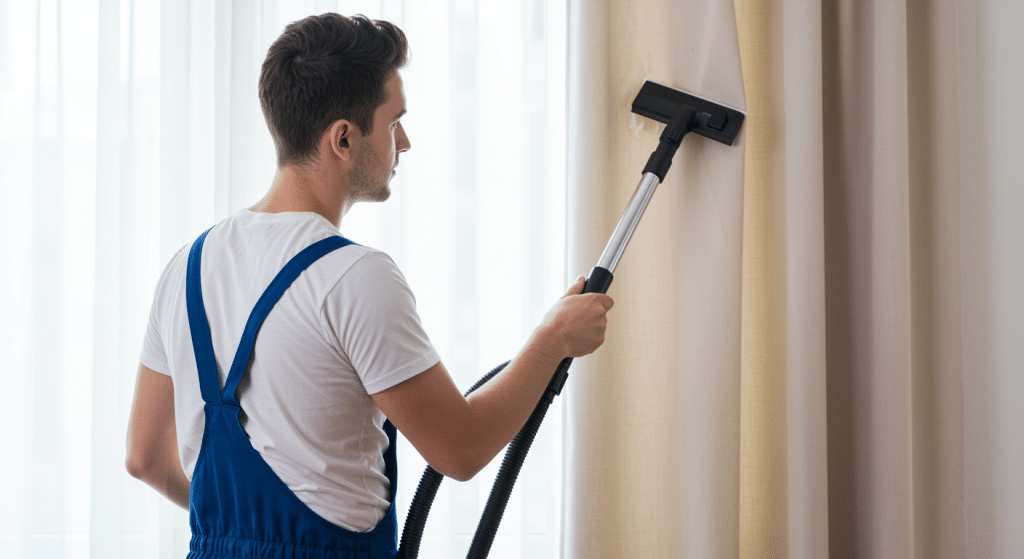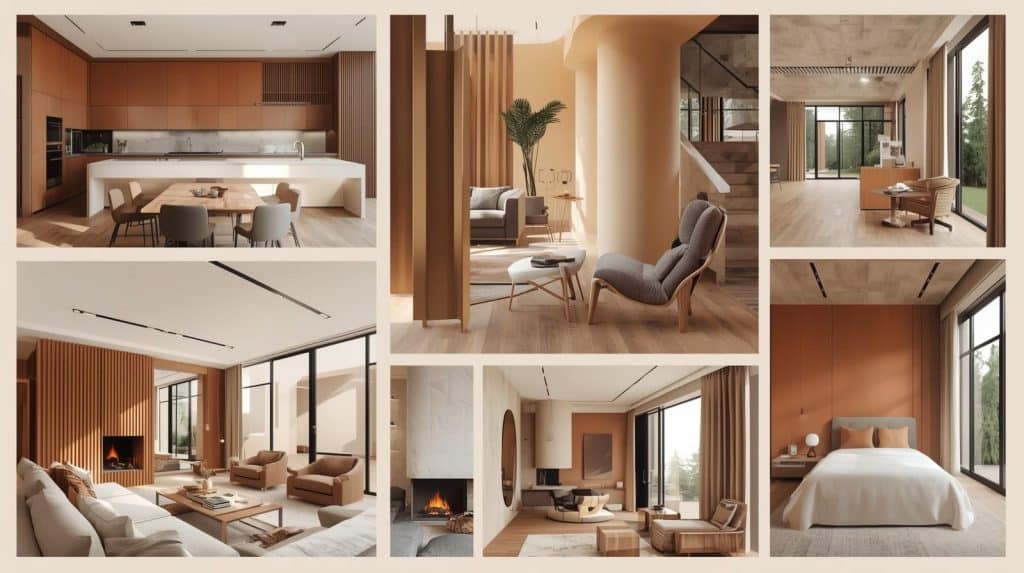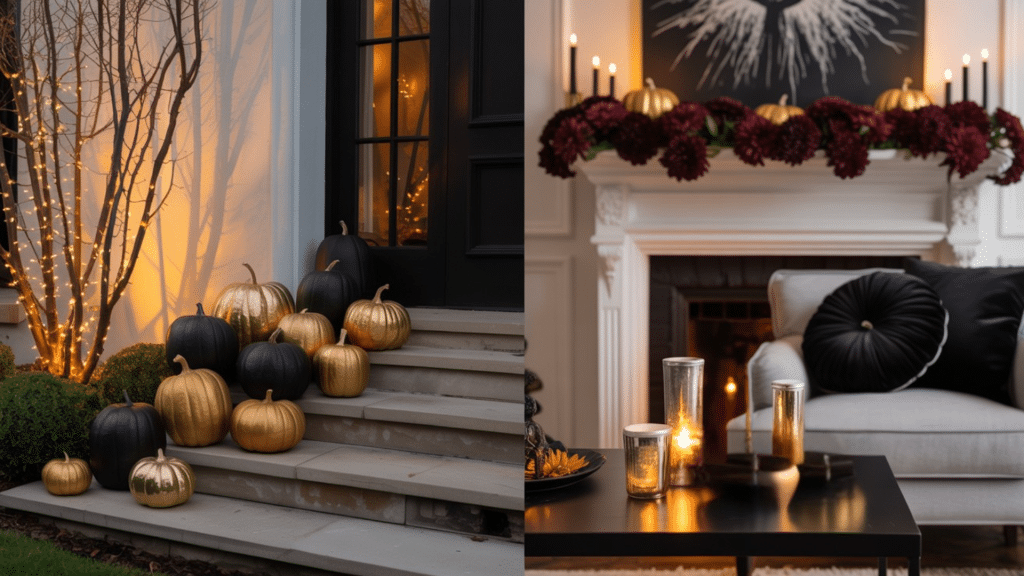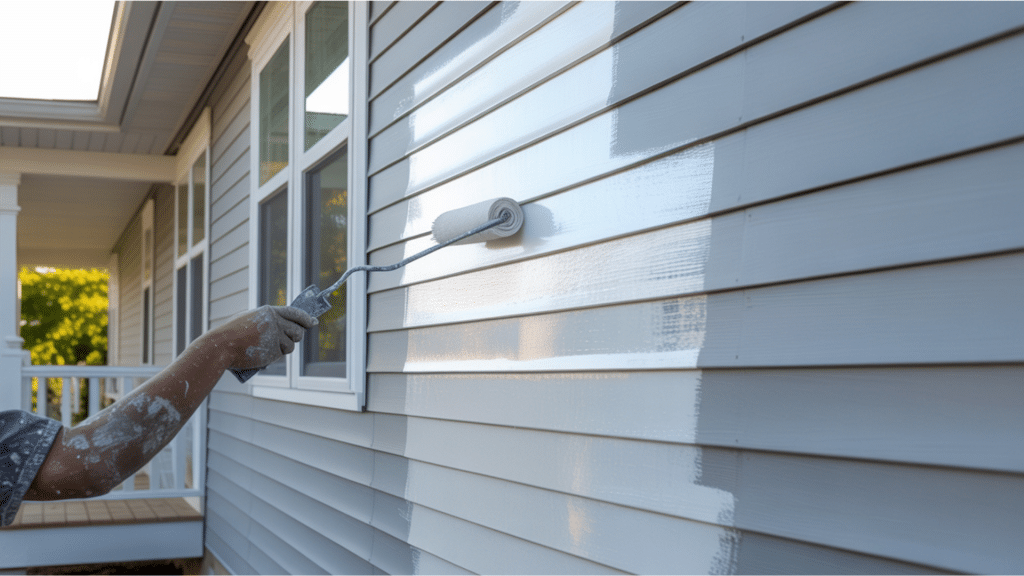You’re standing in the window treatment aisle, completely confused.
Should you buy drapes or curtains for your living room?
Knowing the real differences will save you money and help you pick the perfect window covering. You’ll know exactly what works best for your space and your style goals.
In this blog, you will learn about drapes vs curtains, what their key features are, differences, similarities, and when to use curtains or drapes.
Choosing Between Curtains and Drapes for Your Home
Curtains are simple, light, and practical, while Drapes are luxurious, structured, and designed for impact.
Curtains
- Lightweight fabrics (cotton, linen, polyester blends)
- Unlined, providing basic privacy and light filtering
- Ready-made in standard sizes, widely available
- Hung with simple rods, rings, or pockets
- Affordable, ideal for casual and everyday spaces
Drapes
- Heavy fabrics (velvet, silk, brocade, thick cotton)
- Fully lined for insulation and light blocking
- Custom-tailored to exact window dimensions
- Installed with professional-grade hardware
- Premium option for formal, elegant interiors
The Difference
Let’s compare curtains and drapes side by side. This outlines the key differences you need to be aware of.
| Aspect | Curtains | Drapes |
|---|---|---|
| Length | Window sill or slightly below | Floor length, sometimes pooling |
| Opacity | Semi-transparent, allows light through | Opaque, blocks most light |
| Pleating | Simple or no pleats | Professional pleats and folds |
| Installation | DIY-friendly with basic hardware | Requires professional installation |
| Maintenance | Machine washable at home | Dry cleaning recommended |
| Room Style | Casual, relaxed atmosphere | Formal, upscale appearance |
| Functionality | Basic privacy and light filtering | Complete room darkening and sound dampening |
These differences help you choose what works best for each room in your home.
When to use Curtains
Here are the top situations where curtains make the most sense for your home.
1. Casual Living Spaces
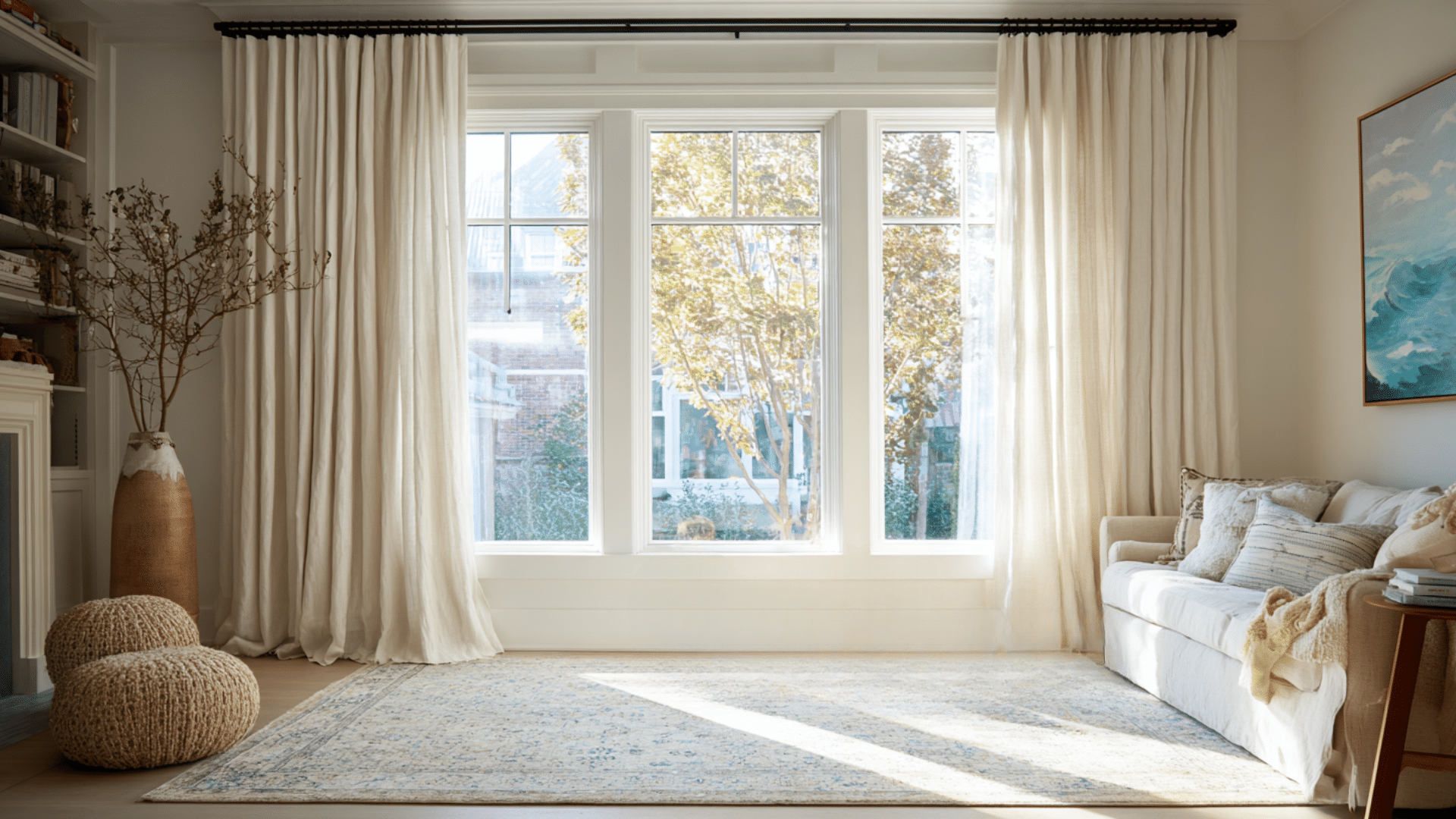
Curtains work perfectly in family rooms and dens. They create a relaxed, comfortable feel that matches everyday activities.
The lightweight fabric allows natural light to filter through while still providing privacy. Additionally, they’re easy to clean when kids or pets make a mess.
2. Budget-Friendly Updates
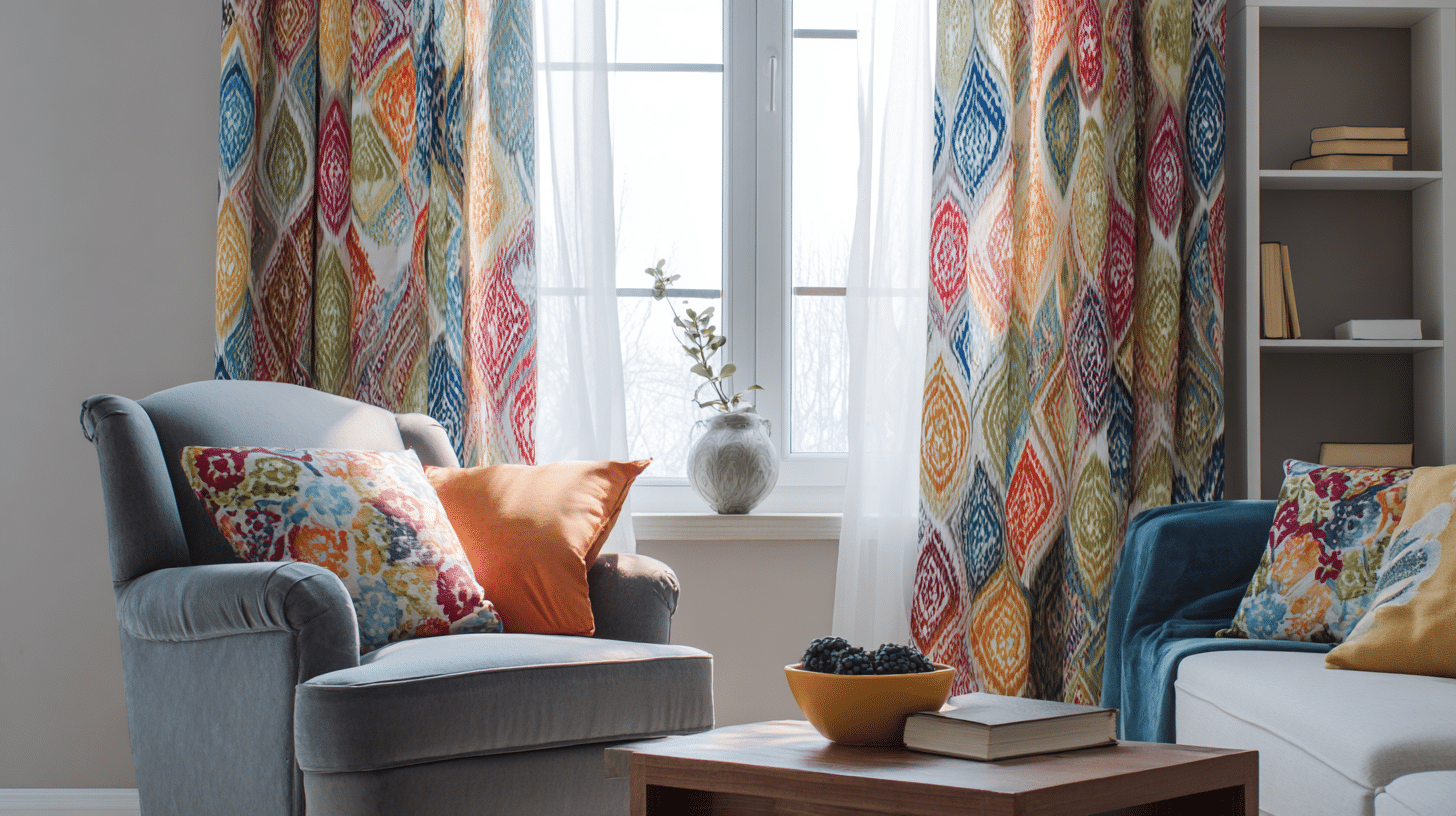
When you want to refresh a room without spending a lot of money, curtains are your best bet. You can find stylish options at discount stores.
They instantly change a room’s look and feel. Switching them seasonally keeps your space feeling fresh and current.
3. Kitchens
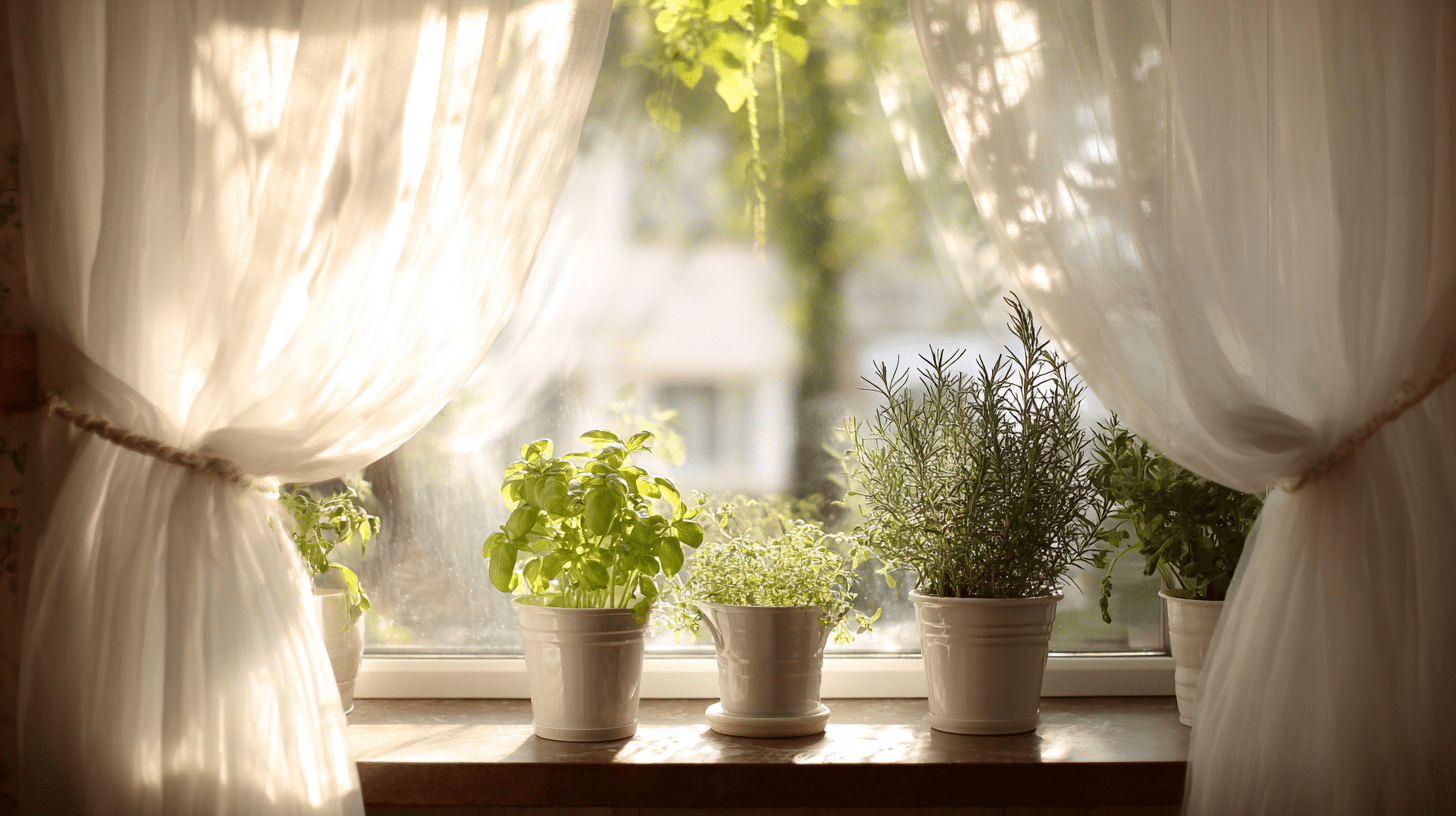
These require window treatments that can withstand moisture and frequent cleaning. Curtains made from synthetic fabrics resist humidity better than those made from heavy materials.
They’re also easier to remove and wash regularly. Short cafe curtains work well for privacy while keeping the space bright.
These scenarios demonstrate how curtains can effectively address your window treatment needs.
When to use Drapes
Now, let’s look at when drapes are the better investment for your space.
4. Formal Dining Rooms
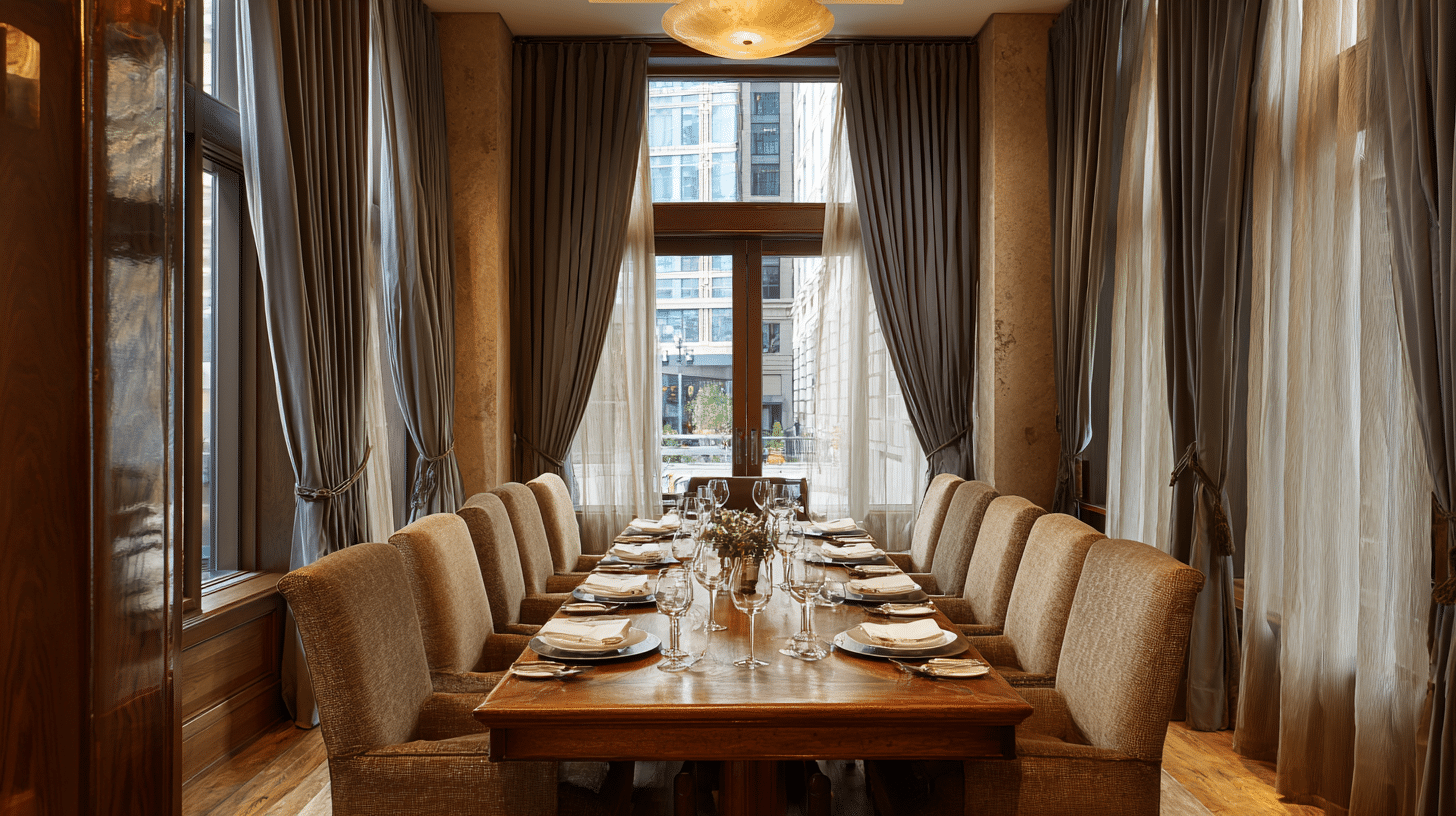
Drapes add sophistication that matches your best china and special occasions. The rich fabrics and professional pleating create an upscale atmosphere.
They also help reduce noise during dinner parties. Floor-length panels make ceilings appear higher and rooms feel more grand.
5. Master Bedrooms
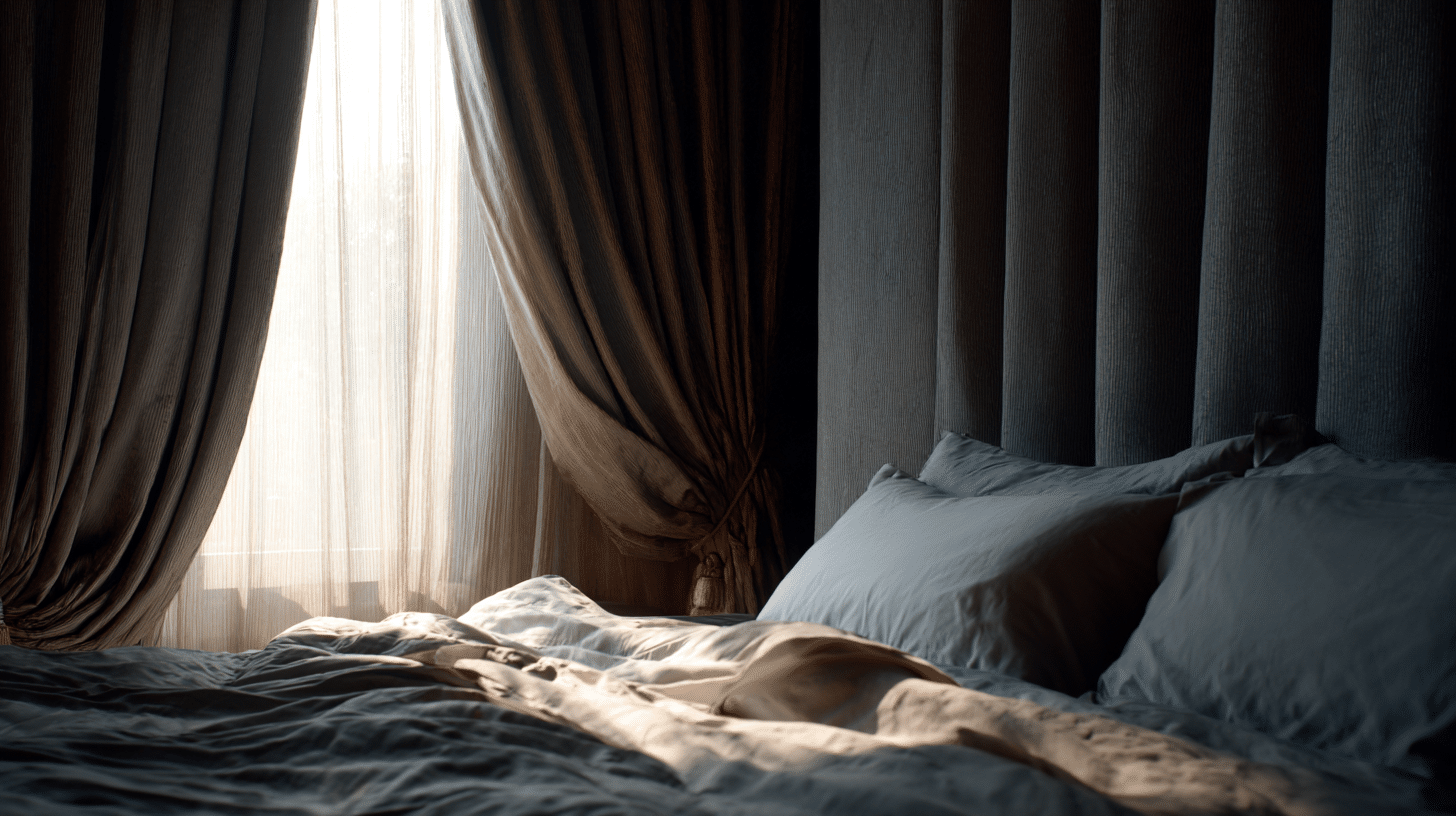
Quality sleep requires complete darkness, and drapes deliver better than curtains. The heavy lining blocks streetlights and early morning sun.
They also provide sound insulation from outside noise. The luxurious look makes your bedroom feel like a high-end hotel suite.
6. Home Theaters and Media Rooms
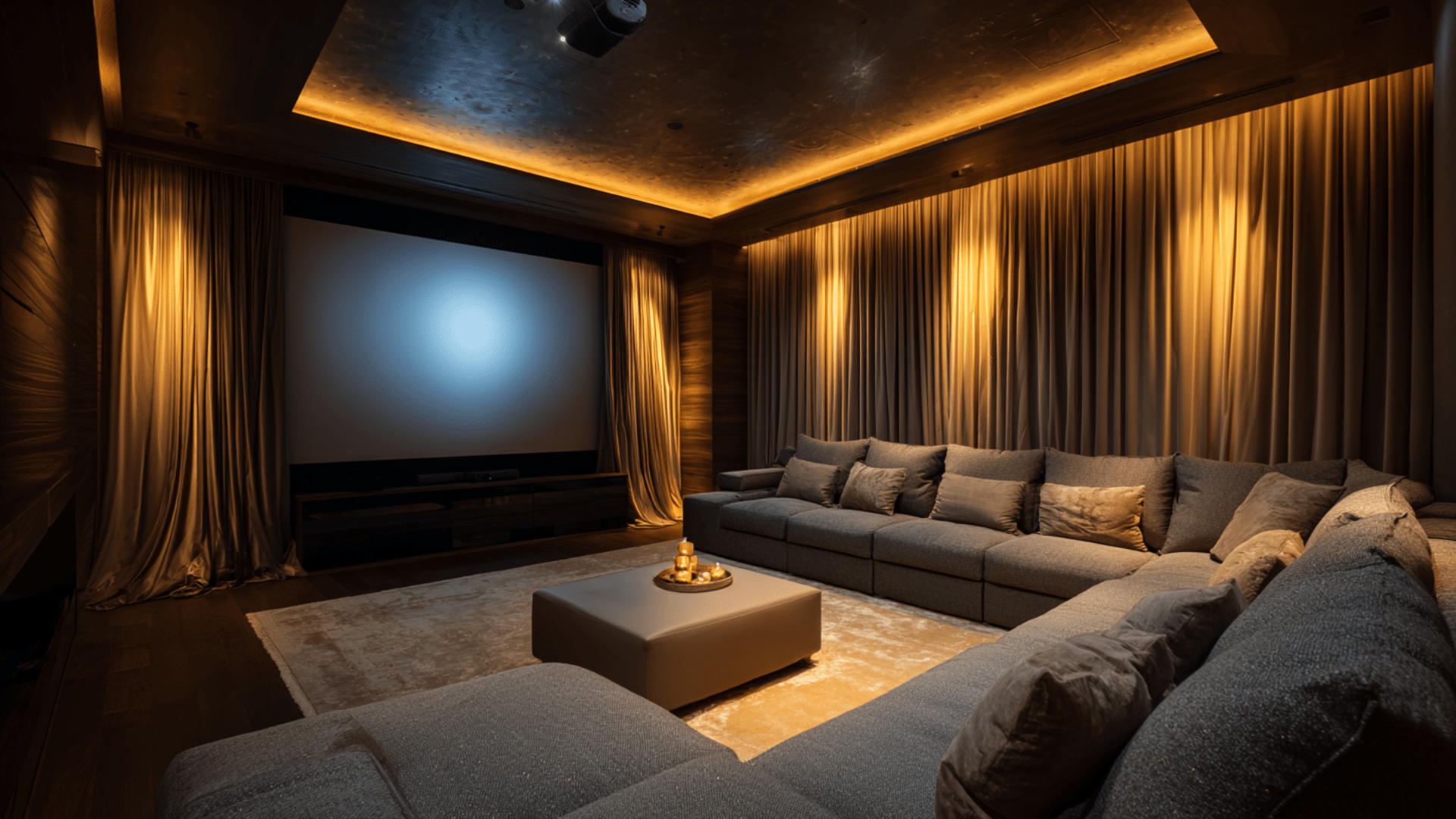
These spaces need total light control for the best viewing experience. Drapes block all outside light that could create screen glare.
The thick fabric also absorbs sound reflections, resulting in improved audio quality. Dark colors help create that true cinema atmosphere you want.
How are Curtains and Drapes Similar?
Despite their differences, curtains and drapes share several important qualities. Here are the main ways they’re alike.
| Similarity | Description |
|---|---|
| Window Coverage | Both hang over windows to provide coverage |
| Privacy Protection | Each option blocks outside views into your home |
| Temperature Control | Help insulate rooms and reduce energy costs |
| Decorative Purpose | Add color, pattern, and style to any room |
| Hanging Methods | Both use rods, tracks, or hardware systems |
These shared benefits make both options valuable for home decoration and comfort.
Cost Comparison
Your wallet will definitely feel the difference between drapes and curtains.
Curtains are budget-friendly, starting at $15-30 per panel for basic options and $40-80 for mid-range. Even quality curtains rarely exceed $150 per panel.
Drapes command premium prices due to heavier fabrics and construction. Ready-made drapes start at $60-100 per panel, with quality options running $150-300.
Custom drapes easily cost $200-500 per panel, and luxury options can reach $800+.
Installation differs, too. Curtains hang on simple rods you can install yourself for under $50. Drapes often need heavy-duty hardware and professional installation, adding $100-300 to your total.
Long-term value favors drapes despite higher upfront costs. Quality drapes last 10-15 years, while budget curtains need replacing every 3-5 years. Drapes also add more resale value.
Expect to spend 2-4 times more for drapes initially, but the durability often justifies the investment for main living areas.
Use curtains in bedrooms or rentals where budget matters more than longevity.
Disclaimer: Prices for curtains and drapes can vary widely based on fabric, brand, retailer, customization, and location. The ranges provided are general estimates and may differ in your area.
How to use Both Together?
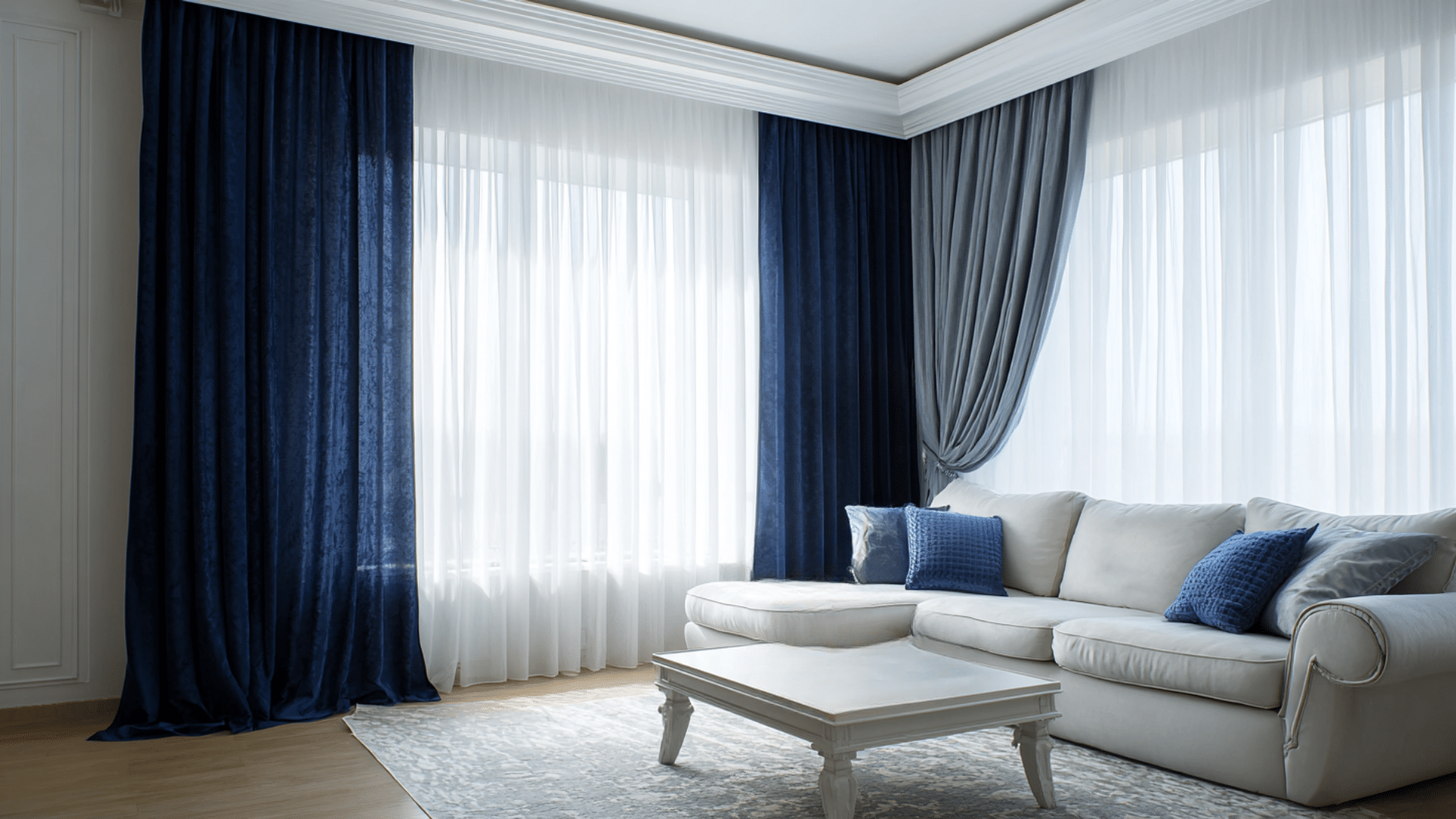
You don’t have to choose just one option. Combining curtains and drapes creates amazing layered looks.
- Layer sheer curtains behind heavy drapes for flexible light control options
- Use curtains as room dividers while drapes cover the main windows
- Mix different colors and patterns to create depth and visual interest
- Hang lightweight curtains inside, heavy drapes outside for seasonal weather changes
- Combine short curtains with long drapes to highlight interesting window shapes
Conclusion
Curtains are suitable for casual spaces due to their affordability and ease of care, while drapes are ideal for formal areas that require full light control and a luxurious look.
Remember the key factors: room style, light needs, and maintenance preferences.
Don’t forget you can mix both types throughout your home or even layer them together.
If you choose the simplicity of curtains or the calmness of drapes, you now know how to make the right decision for every room in your house.


